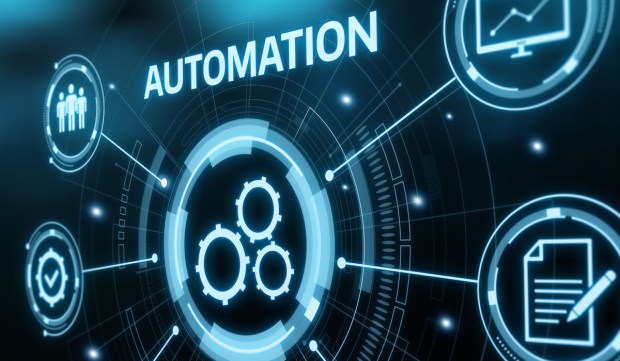Automating Away B2B Payment Frictions: Goodbye Antiquity, Hello Agility

When it comes to B2B payments innovation, thinking outside the box isn’t enough.
It’s time to redesign the whole package.
That’s what PYMNTS learned from some of the payments industry executives we spoke to for a new series, “B2B Payments: Outlook 2024.”
The pain points providing context to the way things have always been done in the B2B payments space inherently rely on decades-old technology stacks and 18th-century innovations like the paper check.
These longstanding commercial payment methods have created an iceberg of institutional inertia, but the promising innovations of the 21st century and the allure of digital functionalities are starting to help thaw the stasis.
To truly revolutionize B2B payments, the first step is addressing these antiquated systems and the enduringly manual use of paper checks head-on.
While legacy systems, often dating back to the pre-digital era, tend to work “just fine,” they were designed for a different business paradigm and can struggle to keep pace with the speed and efficiency required today.
Read also: B2B Payments Are Going Digital and Getting More Personal
The Paper Check Conundrum
“What makes B2B payments such a great market is the presence of true white space, which is rare in payments today,” Ben Weiner, senior vice president and global head of B2B payments at Nuvei, told PYMNTS this month.
“And that white space comes in the form of paper checks converting into electronic forms of payment,” he added. “This really didn’t get a lot of attention in the broader payments ecosystem for many years, due to the sheer amount of complexity and nuance to solve these equations.”
The use of checks introduces unnecessary delays, manual processing overheads, and an increased risk of errors. In an age where real-time transactions are becoming the norm, relying on a physical piece of paper to transfer money seems archaic.
Tom Randklev, global head of product at CellPoint Digital, told PYMNTS last week that the most promising B2B innovations will align with the advancements already being seen in B2C payments, emphasizing connectivity, collaboration and a commitment to simplifying complex financial processes.
“You create efficiencies just by automating a way of the legacy workflows,” he said.
But now, with soaring interest rates and a cost of capital not seen in decades, the macro environment is accelerating a shift away from traditional B2B payment vehicles.
“There’s increasing value in speed and efficiency,” Form3 CEO Mike Walters told PYMNTS this month, noting that ad hoc payments and payments exceptions are revealing the limitations of antiquated technology.
See also: Cash Is King Means ‘Pay Me Sooner’ for B2B Players
Advanced Technologies Are Advancing B2B Payments
By modernizing technology infrastructure and promoting the adoption of digital payment alternatives, businesses can streamline their payment processes, reduce costs and position themselves as agile players in the ever-evolving landscape of B2B transactions.
“Companies are being pushed to innovate,” Enigma Technologies CEO Hicham Oudghiri told PYMNTS this month. “They have the technologies they need to innovate, and they have a lot more market adoption when they do innovate.”
“In the payments industry, we’ve had a very data-rich environment, but we’ve operated in an insight-poor environment,” he added.
Improving B2B payments lies in a two-part strategy, Bank of America Head of Global Payments in Global Transaction Services AJ McCray told PYMNTS this month.
Reducing the frictions inherent in the payments themselves is a first step, “and then there’s reducing the friction in terms of your ability to understand information about the payment itself,” McCray said. “The more structured your data is, and the more data that you have, the easier it is to get that payment processed in a ‘straight-through’ manner.”
Cutting down on manual tasks and paper-based processes is itself a first step in improving B2B payments. Advanced technologies, such as artificial intelligence, can help improve security and create a faster, cheaper microsystem of payments.
“When we line up an ACH and a wire and a card transaction, or a digital transaction for a payment, there’s a bit of a false narrative between which is a working capital tool and what’s simply a blunt instrument to move something from one ledger to another,” Alan Koenigsberg, senior vice president and global head of large, middle market, treasury and working capital solutions at Visa told PYMNTS this month.
“Acceptance is not a product,” he added. “Acceptance is an enabler.”
That’s why, increasingly, businesses must undertake a comprehensive review of their existing tech stacks, identifying areas where modernization is essential. Integration solutions, application programming interfaces and cloud-based platforms can play a pivotal role in bridging the gap between old and new, fostering a more streamlined and efficient B2B payments ecosystem.
For all PYMNTS B2B coverage, subscribe to the daily B2B Newsletter.

